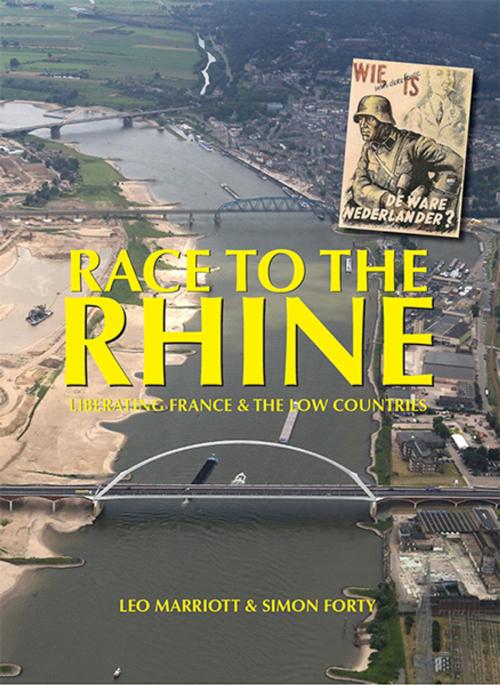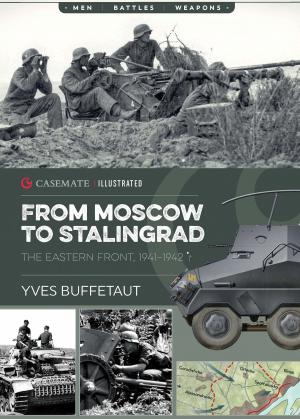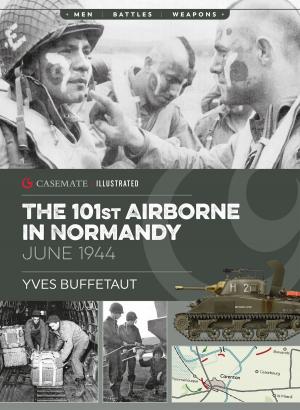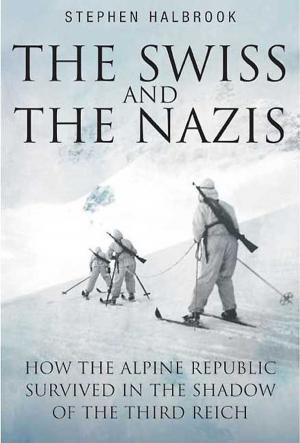Race to the Rhine
Liberating France and the Low Countries 1944-45
Nonfiction, History, Military, Pictorial, World War II| Author: | Leo Marriott, Simon Forty | ISBN: | 9781612003269 |
| Publisher: | Casemate | Publication: | April 19, 2015 |
| Imprint: | Casemate | Language: | English |
| Author: | Leo Marriott, Simon Forty |
| ISBN: | 9781612003269 |
| Publisher: | Casemate |
| Publication: | April 19, 2015 |
| Imprint: | Casemate |
| Language: | English |
The speed of the German Blitzkrieg in 1940 and the relative ease with which they brushed aside Allied defenses meant four years of occupation. But in June 1944—this time with American forces—the Allies finally returned for a rematch. The destruction of German forces in Normandy’s Falaise pocket, on August 14,was as quick as the Blitzkrieg had been: by September British troops were in Ghent and Liege; Canadian forces liberated Ostend, and in northeast France Patton's Third Army was moving rapidly to the German border, taking Rheims on August 29 and Verdun on the 30th. Paris was liberated on August 25th.
The liberation of the Low Countries would not prove as straightforward, however. Operation Market Garden—Montgomery's brave thrust toward the Rhine at Arnhem—started on September 17 and hoped to end German resistance at a stroke. But it ended in failure on the 25th with over 6,000 paratroopers captured.
V-1 flying bombs had meantime been launched from northern France and the Low Countries from August 1944. During September the more frightening German V-2s began raining in. In late October, belated operations began to clear the Scheldt Estuary and open the port of Antwerp to the Allies, and took nearly a month. Belgium was almost free of the Nazi yoke and the Netherlands looked likely to be cleared before Christmas.
Then, on December 16, came Hitler's last roll of the dice: a major German counter-offensive in the Ardennes aiming to split the Allied armies and retake Antwerp. It turned out to be their last try: the American defenders held, and finally with better weather, Patton's army and Allied air superiority told. With the Germans having shot their last bolt, in the spring the Rhine was gained.
Race to the Rhine, a companion volume to The Normandy Battlefields, links modern aerial photography with contemporary illustrations to provide a modern interpretation of the battles, replete with maps, diagrams and photos. It is now 70 years since Western Europe was freed from its occupation, and this book provides a graphic view of how it was accomplished. For those interested in visiting the sites, it supplies a guide to the places that best represent the battles today.
The speed of the German Blitzkrieg in 1940 and the relative ease with which they brushed aside Allied defenses meant four years of occupation. But in June 1944—this time with American forces—the Allies finally returned for a rematch. The destruction of German forces in Normandy’s Falaise pocket, on August 14,was as quick as the Blitzkrieg had been: by September British troops were in Ghent and Liege; Canadian forces liberated Ostend, and in northeast France Patton's Third Army was moving rapidly to the German border, taking Rheims on August 29 and Verdun on the 30th. Paris was liberated on August 25th.
The liberation of the Low Countries would not prove as straightforward, however. Operation Market Garden—Montgomery's brave thrust toward the Rhine at Arnhem—started on September 17 and hoped to end German resistance at a stroke. But it ended in failure on the 25th with over 6,000 paratroopers captured.
V-1 flying bombs had meantime been launched from northern France and the Low Countries from August 1944. During September the more frightening German V-2s began raining in. In late October, belated operations began to clear the Scheldt Estuary and open the port of Antwerp to the Allies, and took nearly a month. Belgium was almost free of the Nazi yoke and the Netherlands looked likely to be cleared before Christmas.
Then, on December 16, came Hitler's last roll of the dice: a major German counter-offensive in the Ardennes aiming to split the Allied armies and retake Antwerp. It turned out to be their last try: the American defenders held, and finally with better weather, Patton's army and Allied air superiority told. With the Germans having shot their last bolt, in the spring the Rhine was gained.
Race to the Rhine, a companion volume to The Normandy Battlefields, links modern aerial photography with contemporary illustrations to provide a modern interpretation of the battles, replete with maps, diagrams and photos. It is now 70 years since Western Europe was freed from its occupation, and this book provides a graphic view of how it was accomplished. For those interested in visiting the sites, it supplies a guide to the places that best represent the battles today.















